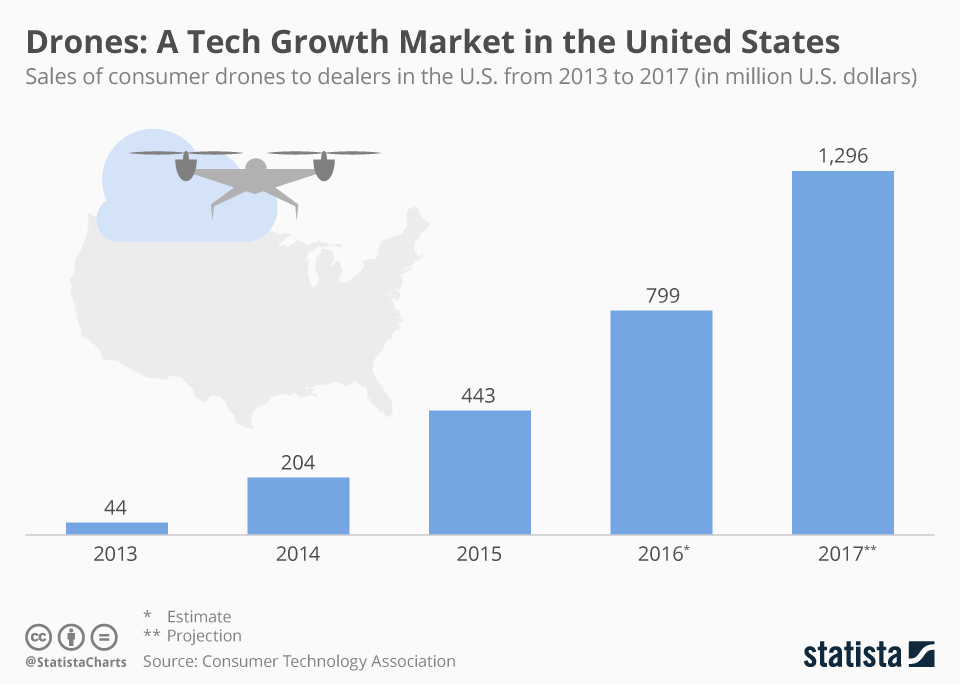DJI to Require Drone Registration to Activate Drones
WASHINGTON—Last week’s court ruling vacating the federal drone registration requirement drew a mixed response from industry parties around the world. The world’s largest drone manufacturer instituted its own registration program, restricting access to full activation.
“If this activation process is not performed… Live camera streaming will be disabled, and flight will be limited to a 50-meter (164-foot) radius up to 30 meters (98 feet) high,” DJI announced over the weekend.
The drone-maker’s decision came two days after the ruling by U.S. Court of Appeals for the D.C. Circuit striking down the FAA’s registration requirement. DJI did not respond immediately to the ruling, but shared a statement from Drone Manufacturers Alliance Executive Director Kara Calvert:
"DMA is studying the implications of today’s registration-related court ruling, but believes the existing system has worked well to protect the interests of safe and responsible pilots as well as the interests of society at large.”
Model aircraft got swept up in the Federal Aviation Administration’s drone registration requirement process. The FAA made registration statutory in December, 2015, for all unmanned aircraft between 0.55 and 55 pounds, including model aircraft. It was a model aircraft enthusiast who challenged the statute and won.
The model aircraft lobby in Muncie, Ind., said its own registration program was working just fine.
“AMA is encouraged to see the court affirm the strength of the Special Rule for Model Aircraft, otherwise known as Section 336, under which our members operate,” said Rich Hanson, president of the Academy of Model Aeronautics. “For decades, AMA members have registered their aircraft with AMA and have followed our community-based safety programming. It is our belief that a community-based program works better than a federally mandated program to manage the recreational community.”
More than 626,000 hobby drones were registered with the FAA at the end of last year. The agency estimated that there were another 474,000 that were not registered. Based on registrations and available data, the FAA forecast that “the hobbyist fleet will likely—base scenario—more than triple in size over the next five years, from 1.1 million units in 2016 to over 3.5 million units by 2021,” or as many as 4.5 million on the high side.
Drones registered for commercial operations numbered 44,000—around 1,000 per week since registration for those opened in April of 2016. The commercial fleet is expected to reach 420,000 by 2021. ~ FAA UAS Forecast
Registration was through the FAA’s web portal. It requires name, home address, email address, and generates a certification of registration and proof of ownership with a unique identifying number that had to be marked on the drone—like a license plate on a car. Total cost, $5. More than 626,000 were registered by the end of last year (See sidebar.)
For DJI, the No. 1 supplier of civilian drones worldwide, the registry was a practical way to manage what is shaping up to be an explosion of drones in U.S. airspace. The FAA has estimated that there could be as many as 4.5 million drones in U.S. airspace by 2021. The Consumer Technology Association also predicts that this will be the year drone sales blow past $1 billion, up 62 percent over 2016.
DJI’s drones are not like radio-controlled model aircraft of yore, but sophisticated, camera-equipped computers capable of 3D flight patterns, for a few hundred bucks. They have been employed for use in movies, newsgathering, infrastructure inspection and more. There is momentum to use them for making deliveries, most notably driven by Amazon, though Americans remain skeptical.
The Association for Unmanned Vehicle Systems International, a D.C. lobby focused on commercial and scientific drone applications, said it was “disappointed” by the court’s decision, and on Tuesday, the organization’s president and CEO testified before a House subcommittee on clearing the way for drone deliveries.
“We need a new national imperative in unmanned systems that, like the air traffic control system and interstate highway system before it, creates greater capacity, reduces road congestion, fulfills consumer demand and facilitates the future of commerce,” Wynne said. “Industry is bringing the technology; government needs to do more to support it and advance innovations such as delivery services.”
Many commercial drone operations have waivers to operate beyond the FAA’s daylight-only, line-of-sight 400-foot ceiling—rules known as “Park 7.” The UAVSI says 314 have been issued, a majority of them for DJI drones.

The professional video industry's #1 source for news, trends and product and tech information. Sign up below.
